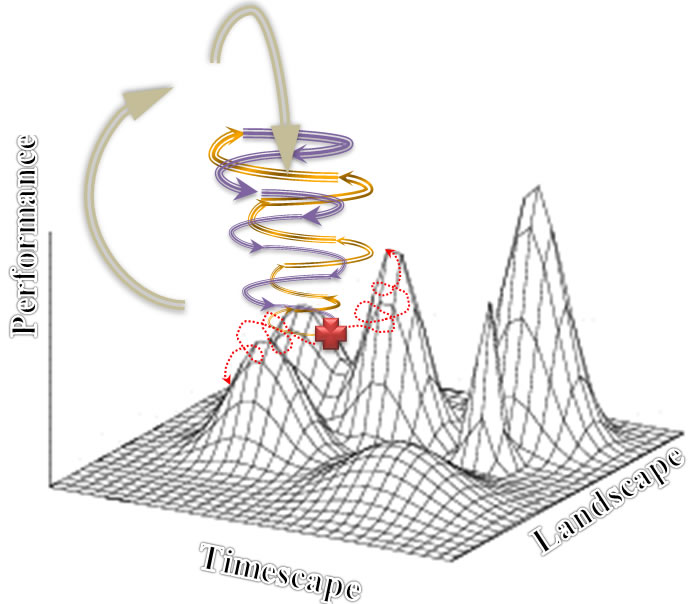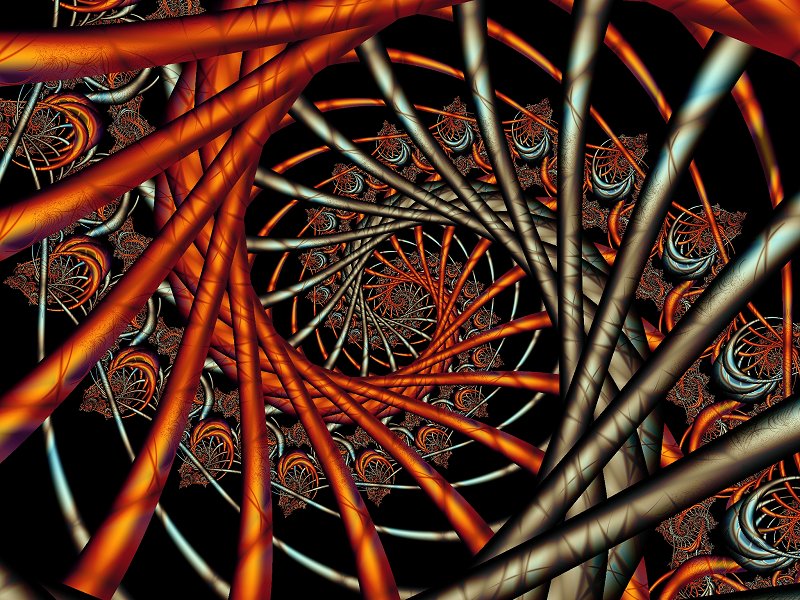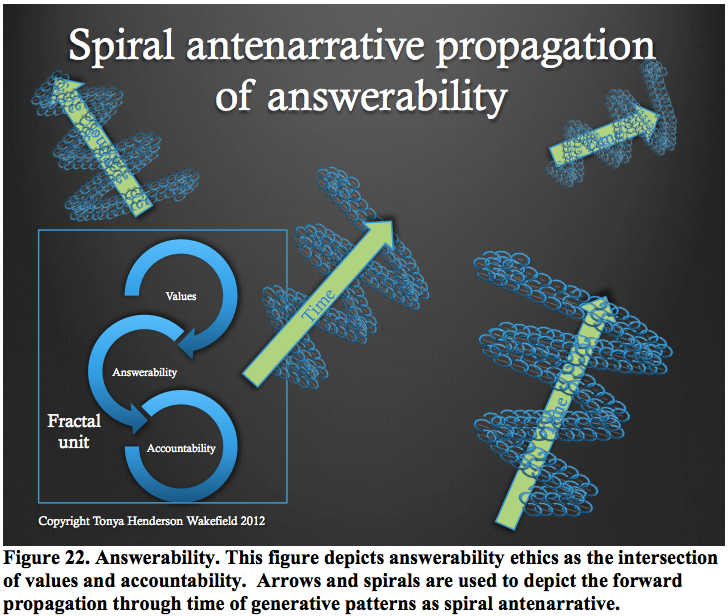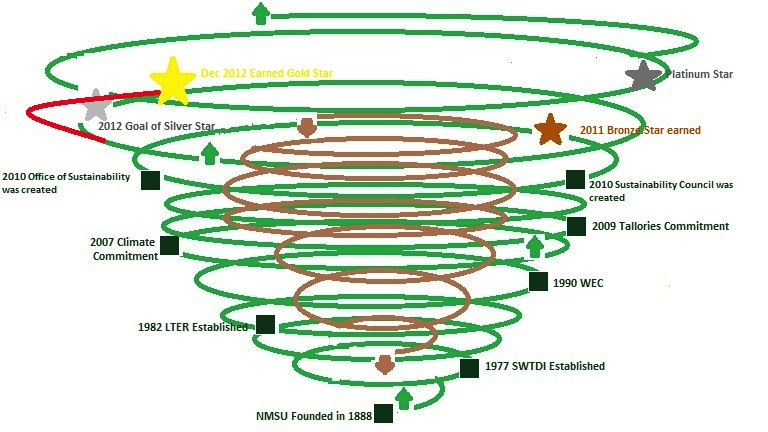Figure 24 - Van Jones: The economic injustice of plastic
250 billion of small water bottles consumed in US last year. If bottled water is heated up, by leaving them in the car in New Mexico, stuff leaches out. The PET1 and PETE is in Benzene family, which has been shown to cause cancer. BP, Exxon, and Chevron operate the petrochemical plants making these water bottles, and lobbying the regulators. Coke pushes Dasani as its bottled water, and Pepsi the Aquafina. Nestle, a Swiss conglomerate, has divided the US into regions. New Mexico is in the Arrowhead region. These bottlers get permits to do water mining in rural communities. Bottled water costs 6 cents a gallon and is sold for $6 a gallon. 75% of the Earth's surface is water, however only 1% is drinkable. Often the bottled water is just filtered and osmosis-treated municipal tap water.
North Pacific Gyre, the giant mass of plastic soup in the Pacific Ocean that is about twice the size of Texas? See what happens to a good deal of the plastic we produce:
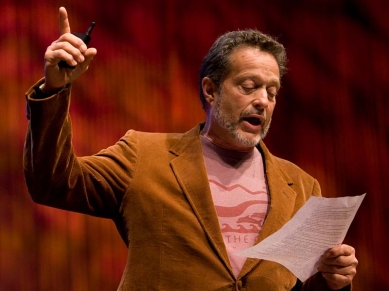
Capt.. Charles Moore Ted Talk on the seas of plastic (2009)
Can’t see the video? Go here.
We can do a similar analysis for Aqufina. It's symbolic system "Pure Water, Perfect Tasted," Purified Drinking water," "Purified through a seven step process..." The symbolism is as before, Aquafina leaves out an indexical, that it is a Pepsi Cola product. The iconic system would include the history, how the Pepsi market share (and Coke's) soft drinks were shrinking, so water become the new commodity, or the advertising dollars and university research funded to show that bottled water was purer, safer, tastier that tap water. The 'real' Pepsi challenge would be to compare Aquafina to tap water, to have an independent science lab to the quantum physics analysis of the water, the trace elements, the leaching from the plastic, the nutritional value.
What if NMSU banned plastic bottled water sales. "To date, more than 90 schools, among them Brown University, Seattle University and Harvard University are banning the sale or restricting the use of plastic water bottles on campus... Cornell and Yale both have reduction campaigns in effect, and the University of Pennsylvania encourages administrative offices to use hydration stations rather than bottled water." (Sustainable Business Practices). Also University of Portland, University of Vermont, and Loyola University-Chicago , Princeton university, UC-Berkeley, and many others have now banned bottled water sales. There are also campus-wide campaigns promoting sustainability including Take Back the Tap at University of Nevada Las Vegas and Tap That at Vassar College. Currently NMSU is promoting alternatives to plastic bottled water, such as refill stations for stainless steel containers. "As a result of criticism raised against the environmental footprint of bottled water and its health issues, many university campuses across the United States have banned the sale of bottled water" (carbon footprint).
"Gioia Thompson, sustainability director at the University of Vermont, says that the movement was started by students in the Vermont Student Environmental Program as an effort to reduce waste on campus" (source).
The storytelling works both ways, e.g.: "In response to the growing movement, the water industry released a video on YouTube last month poking fun at “Ban the Bottle,” an organization that advocates banning one-time-use plastic water bottles. The spot, which features “Star Wars”- like music and flashbacks of antiwar demonstrations, says bottled water is a safe, convenient product that is “one of the healthiest drinks on the shelf” and that its packaging is recyclable."
What is the history?
- Mar 1973 - Vending Cimpanies battle it out
- 1992 -Coca-Cola Weight Training Center. Built at NMSU thanks to the Coca-Cola Bottling Company of Las Cruces.
- Nov 22, 1999 – The New Mexico State University Board of Regents today approved an eight-year contract between the university and Pepsi Cola for exclusive right to provide soft drinks in machines and fountains.
- Apr 2012 -Bottle filling station at NMSU makes campus more sustainable, reduces landfill waste
Antesystem is antecedent to the ongoing interplay of systemicity and antisystem of an organization. Antisystem does not mean 'not system, and is not just nothingness that interanimates with systemicity, rather it is relationality of antisystemicity and antesystem. (Mandarini, 2006:74) refers to the "anti-systemic temporal heterogeneity of the system, the hemorrhaging of totality into a multiplicity of temporal practices." We can add to that the spatial heterogeneity, and the plurality of agencies (such as in Latourian actor-network-theory).
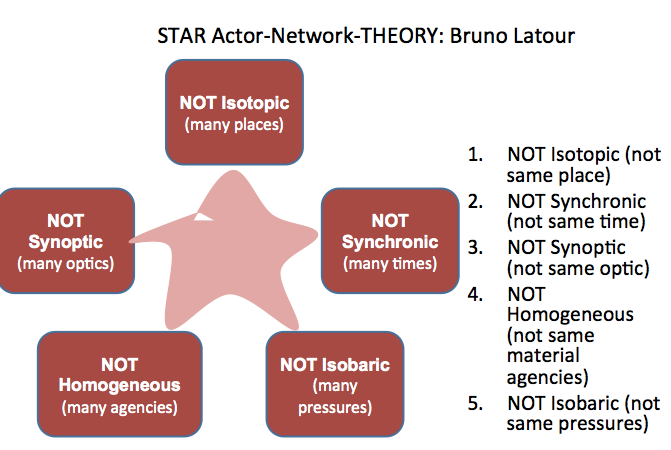
Figure 26 - A Star Model of Actor Network Theory - graphic by D. M. Boje Jan 1, 2013.
System wholeness and concreteness in organizations is countered by the antisystems: multiple places, multiple types, multiple optics, multiple materialities, and multiple pressures. Unity of systems has attained mythic proportions in organization studies. When we inquiry into the ontology of systems of organizations, and the ontic (empirical) actuality, we begin to notice that what our idea of system as whole, as so many parts in one place, time, materiality, agency, and pressure breaks down.
An example of antisystemic relation to systems may help at this point. Watch Vandana Shiva Bill Moyers interview, critical analysis by Vandana Shiva of global food production and Monsanto's GMO seeds, and how it has lead to more hunger, more farmer suicides, the devastation of the Earth's natural living system. Despite the use of words like 'living systems' or 'organic systems' or 'open systems' in organization studies, these have little to do with natured, ecological systems, and all to do with economic growth models of corporate systemicity that is counter to the ecosystem's sustainability. This next one of the Shiva YouTubes has cases of Arthur Anderson calculation of water markets, more on Monsanto, and critiques of full cost of globalization of water industry. When we take a look at the Being-in-the-world of organization's systemicity, we find lots of examples of antisystemic. The antisystemic is all the overlooked, marginalized aspects, such as how massive agribusiness, pharmachemical and others destroy family farms, etc. When we do a critical study of global systems, we begin to see their antisystemic (their breakdowns, blind-spots and ways the antisystemic opposes the systemic). There is more than entropy going on here, more then negontropy. Take for example the Quantum Physics of the Food Systems and its Antisystemics: "Our studies have been biased and skewed towards the big corporation, the globalization model, and away from life on the planet. Food is beset by anti-food. Our water and seeds of life are being privatized. Our land is being turned over to rasing feed for meat production. We are on a downward spiral, without the counter-spiral that would bring balance.... There is a "quantum food physics" which if we follow Aristotle's "On the Soul"." For Aristotle, plants, animals, and not just humans have souls. The human soul has more intellect (rationality) than souls of plants and animals. For many indigenous the water of lakes and rivers the mountains and the stones have soul. This sort of vitalism has been vehemently opposed by open systems theory, and it has led to dire consequences for human, animal, plant and planetary health. The "soul" of system includes plant growth and renewal, the renewal of clean water and air, the plight of animals, revitalization of the soil, is a posthumanist understanding of antisystems. The move to quantum systems-antisystems theory is a posthuman standpoint.
A system-antisystem relationship is defined by its materiality-substance,its quantities, as well as its qualia, and potentia. What is call complex adaptive system is managerial slang for a system in an environment that is just other foraging organizations rather than an ecological environment. If complex adaptive systems thinking took 'whole system' seriously, the ecosystem would not be left out of the analyses. A system has material substance, quantities, qualia, potentiality, relations to place, relation to time of next seven generations. Qualia is a tipping point between system and antisystem, between the heterogeneity of spaces, times, optics, material agencies, and pressures. Limiting system thinking to economic efficacy, to shareholder value, is a recipe for antisystemic disaster. Recent documentary films like "Hungry for Change," "Foodmatters," "Farmageddon," and "Forks Over Knives" are challenging systems to take into account a more comprehensive, accurate, ontological, and sustainable horizon. High Fructose Corn Syrup (HFCS) has proven to be more addictive than cocaine. Sugar (& substitutes) is so overused in American food manufacturing systems, that the human consequence is Americans are the most obese and unhealthy people on the planet (Parker, 2010; Ifland, Preuss, Marcuss, Rourke, Taylor, & Burau, 2009). A Type 2 diabetes is an epidemic that is affecting an ever-increasing proportion of the US population (Gross, Li, Ford and Lau, 2004).In the quantum systems-antisystems analysis of the food system, it is important to study the subatomic processes: "a keto group attached to carbon 2 of the molecule, while glucose presents an aldehyde group at carbon" (Lê & Tappy, 2006). And this sort of system is becoming a worldwide pandemic. For example instead of look at schools as closed or open systems, and antisystemic hermeneutics addresses the downside of addictions that systems promote:
"Sugar-sweetened beverages obtained at school contributed a daily mean of 29 kcal in middle school children and 46 kcal in high school children across all school children. Attending a school without stores or snack bars was estimated to reduce sugar-sweetened beverage consumption by 22 kcal per school day in middle school children (P<0.01) and by 28 kcal in high school children (P<0.01). The lack of a pouring rights contract in a school reduced sugar-sweetened beverage consumption by 16 kcal (P<0.05), and no à la carte offerings in a school reduced consumption by 52 kcal (P<0.001) in middle school children. The most effective practices for reducing energy from low-energy, energy-dense foods were characteristics of the school meal program; not offering french fries reduced low-nutrient, energy-dense foods consumption by 43 kcal in elementary school children (P<0.01) and sugar-sweetened beverage consumption by 41 kcal in high school children (P<0.001)" (Briefel, Crepinsek, Cabili, Wilson, & Gleason, 2009: 775).
Briefel, R. R., Crepinsek, M. K., Cabili, C., Wilson, A., & Gleason, P. M. (2009). School food environments and practices affect dietary behaviors of US public school children. Journal of the American Dietetic Association, 109(2), S91-S107.Gross, L. S., Li, L., Ford, E. S., & Liu, S. (2004). Increased consumption of refined carbohydrates and the epidemic of type 2 diabetes in the United States: an ecologic assessment. The American journal of clinical nutrition, 79(5), 774-779.
Ifland, J. R., Preuss, H. G., Marcus, M. T., Rourke, K. M., Taylor, W. C., Burau, K., ... & Manso, G. (2009). Refined food addiction: a classic substance use disorder. Medical hypotheses, 72(5), 518-526
Lê, K. A., & Tappy, L. (2006). Metabolic effects of fructose. Current Opinion in Clinical Nutrition & Metabolic Care, 9(4), 469-475.
Related questions for 655: What is
this system and antisystemic, and its (un) sustainability? What is this systemic and antisystemic used for? What is ontological-inquiry? How is this systemic and antisystemic in-Being
into the environing world? see overview
part IV Ontological
What is Liquid Modernity?We are witnesses to a shift from systems thinking of Solid Modernity to antisystems thinking. Zygmunt Bauman (2000, 2007) says we have moved from the ‘solid’ modernity of Weberian iron cage of bureaucratic organizations into the Liquid Modernity, where space and time routines don’t last nearly as long as before.
What is Quantum Hermeneutics? It is defined as a posthuman hermeneutics, a hermeneutics of systems-antisystems where instead of billiard-ball physicks, materiality has several definitions: representationalist, historical materialist, postmodern materialist, Althusserian materialist, and quantum materialist (Boje, 2013). Instead of hermeneutic circle, its endless sameness cycle, quantum hermeneutics is a double spiral process. Quantum hermeneutic spiral includes the upward spiraling and the downward spiraling forces of substantive, quantitative, qualia, and potentia.
James, W. (1907). Pragmatism. Lecture 5: Pragmatism and Common Sense. This is a good place to begin to sort out pragmatist hermeneutics in relation to quantum hermeneutics and then to sort out the relation to the 11 D's.
Table 19: Pragmatist and Quantum Hermeneutics
| COMMON-SENSE-MAKING CATEGORIES | PRAGMATIST HERMENEUTICS | QUANTUM HERMENEUTICS | |
|---|---|---|---|
| 1 | Thing; | Thing is changling (p. 121), in successive apparitions, appearances, alterations; in existences we do not see | Directionality: Heidegger (1962 BT, # 109, p. 143) “out of directionality arise the fixed direction of right and left” & “left and right are not something ‘subjective’ from which the subject has a feeling; they are directions of one’s directedness into a world that is ready-to-hand already”; |
| 2 | The same or different; | Flux "no one experiences occurring twice: (p. 119) [Hericlitus] | Datability: Heidegger (1962 BT, #407, p. 459) “seemingly obvious relational structures which we call ‘datability’”; (#408, p. 441) Datability “is the most primordial way of assigning a time”; (#409, p. 462) “allowing oneself time concernfully”; (# 422, p. 474) instead of a succession or a “ ‘flowing stream’ of nows’” in “the course of time” that is a “present-at-hand) “world-time” he proposes “the datable ‘now’”, “In the ordinary interpretation of time as a sequence of ‘nows, both datability and significance are missing” and “covered-up” in a “datability” that “gets leveled off”; (#413, p. 466) |
| 3 | Kinds; | Differerent kinds of things; manyness kinds exist (p. 120) | Deployment: Heidegger (1962 BT, p. 89) “the ‘in-order-to’, the ‘for-the-sake-of’, and the ‘with-which; of an involvement” are “relationships in which concernful circumspection as such already dwells” [see dwelling-in] |
| 4 | Minds; | Minds change in spots, a soaking in of novelty; Ways of thinking of remote ancestors can survive to present; | Disclosability: Heidegger (#75, p. 105) says “‘disclose’ and ‘disclosedness’ will be used as technical terms in the passages that follow, and shall signify ‘to lay open’ and ‘the character of having been laid open.’ Thus ‘to disclose’ never means anything like to obtain indirectly by inference’”; (#110, p. 145) “co-disclosedness of space”; (#75, p. 105) “disclosedness:, i.e. of a “whole ‘workshop’ – as that wherein concern always dwells” and “context of equipment is lit up” and “world announces itself”; (#175; p. 219) “The disclosedness of Being-in-the-world”; (#180, p. 224) |
| 5 | Bodies; | Rather than static bodies, a pragmatist embodiment, in relation to others, in relation to the world & universe | Destining: Heidegger (QCT, p. 57) destining is not a succession of eras; (PLT) destining; (1962 BT, #56, p. 82) “Being-in-the-world” is bound up with “destiny” of Being of entities encountered, such as metal of corporeality of Being; (#344, p. 436) Destiny is not something that puts itself together out of individual fates, any more than Being-with-one-another can be conceived as the occurring together of several Subjects”; (#385, p. 437) Generations of blacksmiths for example, form an historic community grounding in advance the possibilities in “Being of care” the “futural” and in “authentic historicality”; (#150, p. 191) destining is an “interpretation” “grounded in something we have in advance – in a fore-having … fore-sight … fore-conception”; (#80, p. 110) “A warning signal, what is coming”; (#90, p. 111) |
| 6 | One Time | Plurality of times; not equally flowing times; everything has its own duration & extension to next thing | Duration: Heidegger (1962 BT, 18, p. 39) “Aristotle to Bergson and even later”; (ibid) “as against Bergson’s thesis that the time one has in mind in this conception is space” and is “ontic” and no longer has “authentic ontological relevance”; (#26, p. 49) duration is present-at-hand, as with Parmenides it is ontic. Kant and Bergson are too influenced by Aristotle’s essay on time in Physics book; (#47, p. 73) Bergson understands duration as “philosophical anthropology” of experiences; (#333, p. 382) critique of Bergson – “it is not an externalization of a ‘qualitative time’ into space, as Bergson’s Interpretation of time – which is ontologically quite indefinite and inadequate – would have us believe”; (# 106, p. 140) “‘half an hour’ is not thirty minutes but a duration which has no ‘length’ at all in the sense of a quantitative stretch” (ibid) duration is “the pathways we take: that “vary in length from day to day”; (ibid) Duration is not a stretch of space or time, or “corporeal Thing” present-at-hand, rather it is ready-at-hand “a kind of concernful Being:; (#106, pp. 140-1) “a pathway which is long ‘Objectively; can be, much shorter than one which is ‘Objectively’ shorter still but which is perhaps ‘hard going’ and comes before us as interminably long” yet is “authentically ready-to-hand” |
| 7 | One Space | Plurality of spaces; map is not the territory | Dwelling: Heidegger (1962 BT, #54, p. 80) “to dwell” signifies Being-in and means “I reside” or “dwell alongside” the world; (# 61, p. 89) we can look at the work from a view-point, “such looking-at enters the mode of dwelling autonomously alongside entities within-the-world. In this kind of ‘dwelling’ as a holding-oneself-back from any manipulation or utilization, the perception of the present-at-hand is consummated”; (#80, p. 111) “Signs always indicate primarily ‘wherein’ one lives, where one’s concern dwells, what sort of involvement there is with something” such as equipment “ready-to-hand”; (#107, p. 141) |
| 8 | Subjects and attributes; | Rather than unit-subjects with interchangeable attributes, pragmatist looks to sense-qualities in concrete experiences | De-severance: Heidegger (1962 BT, # 107) “Because Dasein is essentially spatial in the way of de-severance, its dealings always keep within an ‘environment; which is desevered from it with a certain leeway…. Accordingly our seeing and hearing always go proximally beyond what is distantially ‘closest.’”. “Occupying a place must be conceived as a desevering of the environmentally ready-to-hand into a region which has been circumspectively discovered in advance”; (#108: p. 143) “Both directionality and de-severance, as modes of Being-in-the-world, are guided beforehand by the circumspection of concern”; (#109, p. 144) “De-severance and directionality as constitutive characteristics of Being-in are determinative for Dasein’s spatiality – for being concernfully and circumspectively in space, in space discovered and within-the-world”; (#299-300, p. 346) “Being-in-the-world has a spatiality of its own, characterized by the phenomena of de-severance and directionality” |
| 9 | Causal influences; | Antediluvian (time before the flood) where every thing is significant & exserts influence | Drafts: Heidegger (1971 PLT: 130) Boje’s spiral-antenarrative processes of the thingness of things is in the path of caring, of what Heidegger calls the widest "orbit of the whole draft" (PLT, 1971, 130). The widest orbit of the spiral-antenarrative is an unshieldedness, Boje calls “inner ♥-space of our worldly existence” based on Heidegger’s “heart’s space” concept, "inward the true interior of the heart's space" (p. 130). The spiral-antenarrative is a primordial path from birth through death, downward "where all ground breaks off- into the abyss" (PLT, 1971: 119), and upwards, into that end of this life, and into the afterlife. The above figure integrates Heidegger's (PLT, 1971: 128) ideas of a draft-center as attracting our path, draft-center, within the entire Being-in-the-world of the spherical forces of the whole integral draft space-time. The other attractor is the whole sphere (space-time) forces of integral draft. These define the simultaneous forces of the spiral-sphere. The spiral-antenarrative activities and processes are in the "sphereicity of the unifying" a sort of lightning" (PLT, 1971: p. 123). This is the draft attraction of place. The well-roundedness of the spiral-sphere can be "thought of as the Being of beings in the sense of the unconcealing-lightning unifying" (ibid, p. 123). "The widest orbit is the wholeness of the whole draft of attraction: (ibid, p. 124). "When we are touched from out of the widest orbit, the touch goes to our very nature" (ibid, p. 125), in the "globe of Being" (p. 124). For more see Boje (2012b, on line, http://peaceaware.com/Boje/index.htm |
| 10 | The fancied; | Primitive people believed fancies and real were inextricably related; liveliness pursues influenced real; dreams and real related | Dispersion: Heidegger (1962 BT, # 109, p. 144) “the equipment-context of a world”; (#110; p. 145) “equipment-context ready-to-hand”; (#112, p. 147) “totality of places belonging to equipment ready-to-hand”; (#390, p. 442 “dispersion” and “disconnectedness” arises in an “inauthentic historicality”; (#390, p. 442) “dispersal” of “unity” “our lostness” in the “they”; (#391, p. 442) “The Self’s resolution against the inconstancy of distraction”; Another dispersion of processes is a “dispersal” away from “unity” in a shop by following too many other people’s ways of doing blacksmithing, which is the “they-self” mimicking of other iron artists (Heidegger 1962 BT, #392, p. 444). |
| 11 | The real. | Instead of representational real, or here are many realities, some good & some bad; a flux of energetic (energies); discontinuity of experiences | Detaching: Heidegger (1962 BT): Detaching - the process is no longer useful (# 82, p. 113), a severing takes place. Detaching is also something to do with getting out of inauthentic relations to ‘they-self’ so a Self can form. When the process is a part of disclosability, and directionality, it is not detachable (#95, p. 127). (#130, p.168) “Authentic Being-one’s-Self does not rest upon an exceptional condition of the subject, a condition that has been detached from the ‘they’’ it is rather an existentiale modification of the ‘they’ – as an essential existentiale.”; (#177, p. 221) “Idle talk is not something present-at-hand for itself within the world, as a product detached from Being-with-one-another.”; (#298, p. 344) “Resoluteness, as authentic Being-one’s-Self, does not detach Dasein from its world, nor does it isolate it so that it becomes a free-floating ‘I’.”; (#397: p. 449) “”But in so far as this ‘today’ has been interpreted in terms of understanding a possibility of existence which has been seized upon – an understanding which is repetitive in a futural manner – authentic historiology becomes a way in which the ‘today’ gets deprives of its character as present’ in other words, it becomes a way of painfully detaching oneself from the falling publicness of the ‘today’.”; |
Note: The Pragmatic Hermeneutic Spiralness and the Quantum Hermeneutic Spiralness are not in one-to-one relations. You will need to work such a framing out yourself.
Heidegger Abbreviations:
BT Heidegger, M. (1962). Being and Time. Translated by John Macquarrie & Edward Robinson. NY: Harper Row.
BT Heidegger (1996). Being and Time. Translated by Joan Stambaugh. State University of New York Press, Albany NY.
HCT Heidegger, M. (1992). History of the Concept of Time: Prolegomena. Translated by Theodore Kisiel. Bloomington & Indianapolis: Indiana University Press. Originally, 1925.
PLT Heidegger, M. (1971). Poetry, Language, Thought, trans. A. Hofstadter. NY: Harper and Row.
QCT Heidegger, M. (1977). The Question Concerning Technology, trans. William Lovitt. NY: Harper and Row. The Turning; The Word of Nietzsche: "God is Dead"; The Age of the World Picture; Science and Reflection --- are essays in the QCT book.
Summary
Life does not transact itself in a purely epistemological or rationalistic dimension. The epistemic turns towards the past, in acts of retrospective-sense-giving, the make prospective (telos) towards repetition of sameness of the past. Empiric verifies the correctness if ides in a "mass of verification experience" (James, 1907: 146). Pragmatists turn towards the future, in relation of some experience to the "sum total of the world's experience" (p. 146). The pragmatist faces forward, while the epistemologist places backwards, and the empiricist faces the present.
"We life forwards, a Danish thinker has said, but we understand backwards. The present sheds a backward light on the world's previous processes. They may have been truth-processes for the actors in them They are not for one who knows the later revelations of the story" (James, 1907: 146).
Take the case of spiralization. The epistemologist names some vague, partial and naive ideas about Archemeian-spiral, or Logrithmic-spiral. The empiricist sets up verification processes of the ideas in the what is of the present observations of spiralization. That verification process can be as vague and naive as the epistemic ideas of spiral forms. The pragmatist connects the spiralization with life, the practical value-added results of the spiralization transaction be they 'subjective' ways of idealizing, or 'objective' ways of measuring spiralness. This deranges commonsense epistemic and vague empiricist verification attempts. The pragmatist makes the monist spiral (Archimedean or Logarithmic) an hypothesis, by positing the possibility of a plurality of spiralization-kinds. This ungears the monoism-spiral-ideas, so that direct face-to-face verification of present spiralness can take place. Since the pragmatist faces forward towards the future, the prolongations of the past is treated as a hypothesis, alongside the future arriving present, and matches up to the Heideggerian hermeneutics. The pragmatist and the ontologist assume that the understanding of the spiralization processes is only partial. Spiralizations are "the antediluvian monsters" (James, 1907: 141) with the datability of "dates and settings." Those antediluvian spiralization monsters of ancient past time, cohere everything in the present, as well as constituting a "leading-process" from future into the present (ibid). Rather than behave according to the naive-spiral ideals, the spiralization process conforms its rootlets to the surrounding environmental contexts (landscape, timescapes, & materialscapes), and this affects the spiral-complexes' trajectory, its path through the environment.
In the usual business of all spiralizations exist in kinds and not in monist-singularity of Archimedean or Logarithmic spiral epistemology. There is spiralness to spiralization that is so far without empirical verification. We need empiric process of verification to move beyond the niave-spiral-abstractions. Pragmatists conclude that epistemic and empiric are not the only stock in trade (p. 138). We can do more than attempt to verify the epistemic spiral (mental) ideas. We can compare kinds of spiralizations to one another. Does this one have three stable orbits and that one only two? Does this one have more updrafts, and that one more downdrafts? Does this one have fewer bridges that leap between orbits, than that other one? Does this one have more movement along a path in its surrounding environment? These concrete empiric verifications would take our spiralization scholarship beyond the naive and vague, and into "sensible facts of experience" (James, 1907: 138).
Spiralization awaits an ontological verification of its waywardness, plurality, fractal connections, and disclosability of its hidden workings, by eye-witness evidence, a precise verifiability of movements of the orbits upward and downward, inward and outward of the entire systemicity, as well as the movement of the spiralization along a trajectory in context of Being-in-the-world, dwelling in space, in time. This would be the pragmatist exploration of the superstructure of spiralization, in the diameter of the orbits, their simultaneous directionalities, and the mutations, we can call shape-shifting.
When you experience a spiralization event, please write it down in a notebook. Describe and document the particulars of the spiralization experience. Is the spiralness shot through with regularities, recurrences of sameness cycles, or is it orbits of difference that amplify or contract, in some sort of sequence? A loose spiralization description will miss the connections between the orbits, be vague about places, dates, distances, activities, hidden working, and paths, including the movement of paths in the environment.
The epistemology of representation of the 'real' in spiral-model, awaits the sphere of vari-fication and valid-ation (p. 123) of the empiricist. Pragmatist hermeneutics instigates towards ways the parts of experience, past-present-future hang together in ways that are practical, useful, important, invaluable to human life. A more posthumanist pragmatist hermeneutics treats human as only one of many species, all spatially-important, temporally-imporant, and materially-important to the life of the planet, to all life of the planet. I therefore want us to explain the particular spiralizations and spiralness of the antesystemicties-systemicities-antisystemicities in a pragmatist discussion that moves beyond epistemic materialist-representationism, beyond empiric materialist-conditions, and towards the practical ways of Being-in-the-world, ontologically (not in what is, rather in how understanding is hermeneutic). I am put off by the vague and naive epistemic open systems theorizing. An ethnographic inquiry that takes a pragmatist description seriously, would question open systems thinking, as too rationalistic, monist, too much unity of causality, too much unity of the aesthetic narrative into ins monological beginning-middle-end emplotment (a rather shallow hermeneutics). Instead of the 1-to-1 representationalism of epistomic retrospection (looking backward), there is a quantum field beyond the "naif realism" of materialist-representationism approach (James, 1907: 122). Pragmatist hermeneutics wreaks havoc with the common-sense spiral-representations of the epistemologists. Here we have focused on what happens with the scope of practical control of Nature's food and drinks, is put in the hands of agribusiness in ways that is beyond the ground of common-sense, as children and the planet's ecosystemicity are being crushed by the antediluvian monster. Historicity and historicality are not the same. Epistemic has too much historicity (shallow rendition of surface history of a few heros), while the empiric denies history altogether in the cross-section mania. A pragmatist-ontological-hermeneutics would be refreshing, since it would be a study of historicaliness, not historicity.
WHAT ARE SOME PROPOSED STAGES OF THE PRAGMATIST HERMENEUTICS?
STAGE ONE: Question the common-sense retrospective (backward-looking) epistemic models (such as naive & vague Archemedian-spiral or Logrithmic-spiral shapes) that makes language (the naming of things) its ally (James, 1907:124).
STAGE TWO: Question the vagueness of the empiric verification process of these epistemic models. From a pragmatist hermeneutics, "no one experience [is] occurring twice" (James, 1907: 119). There are different kinds of things, in manyness, with their own durations and extension, in flux of energetic experience, and episodes are successive, rather than independent, and therefore consequential one episode to the next (p 116-117).
STAGE THREE: Do a pragmatist criticism of the monoism, by searching out plurality of action, situated in environment (not in blankness) What are the quanta, qualia, the substances, and the quantities that make up what Aristotle calls the 'soul' of a process-complex.
STAGE FOUR: Do a materialities analysis, looking at the negotiations among multiple materiality rhetorics, including the quantum versions of materiality rhetorics.
STAGE FIVE: Do a deconstructive-hermeneutics, a resituation (Boje & Tyler, 2009 Click here for pre-press PDF), a restorying (Rosile & Boje, 2002 Click here for pre-publication pdf).
Rather than a hermeneutic circle, how could James' stages be a hermeneutic-spiralizaiton-antesystemicity? Instead of noetic monism (p. 112), a "noetic pluralism" hypothesis is put forth by a pragmatist hermeneutic spiralization. Instead of system being eternally complete, a hermeneutic spiralization occurs in gradual grafting on an soaking in of novelty experiences onto unaltered knowledge and unchanged habits of action, so that spiralization is describing a dynamic "changling" (p. 121) that "grows in spots" (p. 112) while "some old knowledge remains what is was" (p. 112). Perhaps systemicity is not whole it all, merely loosely connect parts on a copula-assemblage. In that case, we would need a pragmatist rhizomatic-hermeneutics instead of a spiralization-hermeneutics. Anything but a cyclic-hermeneutics.
Purpose
To develop something I am calling 'ontological-storytelling-inquiry'
into antesystemicity theory and method. Ontological is according to Martin Heidegger (1962, 1991, 1999),
an 'in'-Being. It is not 'ontic' which means to exist or not, in-the-world, a
corporeal-being. Rather, ontology is what is meant by 'in'-Being. Another word
for ontology is 'worldhood, Being-There in-worldhood. Dwelling, Being-in-the-world.
Systemic and Antisystemic are in relationship with Antesystemicity.
Systemic: "social space as homogenous", "singular economic logic", "functionally reducing the dynamics of all social processes... to the developmental logic of the 'laws' of space" (Callari & Russio, 1996: 15-16).
Antisystemic: a critical postmodernist challenge to open systems theory, to its system-building grand narrative. The postmodernist materialist rhetoric (Boje) develops a theory of agency in that is the opposition of antisystemic to systemic. "antisystem carries the implications of conjuncture, openness, change, even disorder" (Callari & Ruccio, 1996: 9). See Freire's dialogic and anti-dialogic as one version of antisystemicity.
Practical Applications: Learning to Live with Complexity, Harvard Business Review http://hbr.org/2011/09/embracing-complexity/ar/1
Excerpt: "Complex organizations are far more difficult to manage than merely complicated ones. It’s harder to predict what will happen, because complex systems interact in unexpected ways. It’s harder to make sense of things, because the degree of complexity may lie beyond our cognitive limits. And it’s harder to place bets, because the past behavior of a complex system may not predict its future behavior. In a complex system the outlier is often more significant than the average.
HBR: How do you think about complexity? Prigogine and Stengers (1984) give us insight into reenchanting open systems theory, and moving into the implications of Heisenberg Uncertainty Principle and its relation to Heidegger's Ontological hermeneutics.
These two discursive claims are about the praxis of system-antisystem, how they bring about change and transformation in a Heidegger ontology includes antesystemicity (transformative bets on the future). Here we go beyond the tradition trilogy of rationalist, mechanistic, and organic systems, and beyond open systems theory. Boje (2008) has a critique of open systems theory its obsession with levels (9 of them). Ironically, as Zizek (2007, Parallex View) argues, that level 9 is the Kantian transcendental level. The Kantian parallex (Critique of Pure Reason) is antinomic (reduced to a single aspect of cognitive system architectonic):
"Human reason is by nature architectonic. That is to say, it regards all cognitions as parts of a possible system and hence accepts only such principles as at least do not incapacitate a cognition to which we may have attained from being placed along with others in a general system" (Kant, p. 337).
'By the term architectonic I mean the art of constructing a system. Without systematic unity, our knowledge cannot become science; it will be an aggregate, and not a system. Thus architectonic is the doctrine of the scientific in cognition, and therefore necessarily forms part of our methodology (ibid, p. 551).
Kant is referring to an architextonic general systems of transcendental unity that as a parallex is a priori (transcendental). Zizek (2007) proposes a different hermeneutics of the parallex, a gap between epistemic and ontic (p. 10), that is, the ontological, read in a Marxian dialectic. He proposes a "parallex shift" from the superego-parallex (Kantian or Marxian), and from nothingness (Sartre), to an ontological difference between physical and Metaphysical, such as the gap between humanity and its own inhumane excess (p. 5) or the parallex of wave-particle in quantum physics (p. 7).
Bauman (1978) says that Talcott Parsons "disenchanted systems theory." The next to the last section of Prigogine and Stengers' (1984) Order out of Chaos is a reenchantment of nature. Here in Mgt 655 we will re-enchant systems theory with antisystems and antesystemicity theory. You will learn how von Bertallanffy disenchanted open systems theory, not just Parsons. We will look at living system theory, but unfortunately, it to is disenchanted. This will not do. After all this is New Mexico, the Land of Enchantment!
For Parsons, the hermeneutic was that of a 'weak process model' (type 1 in Van de Ven & Poole, 2005) where social system had four key components:
(1) adaptation: the need to relate to the environment by taking resources from it;
(2) goal attainment: the setting of goals for the system;
(3) integration: the maintenance of internal order;
(4) latency or pattern maintenance: the generation of sufficient motivation to perform tasks
Beyond Complex Adaptive Systems Theory
A complex adaptive system (CAS), such as in Stuart Kaufman's work (see Type IV model in Van de Ven & Poole, 2005) has three characteristics. The first is that the system consists of a number of heterogeneous agents, and each of those agents makes decisions about how to behave. The most important dimension here is that those decisions will evolve over time. The second characteristic is that the agents interact with one another. That interaction leads to the third—something that scientists call emergence: In a very real way, the whole becomes greater than the sum of the parts. The key issue is that you can’t really understand the whole system by simply looking at its individual parts.
"The observer is part of the system of description; his/her
language is one among several possible others" (van Foerster,
1981, as sited in Antonacopoulou & Tsoukas, 2002: 858). Along with the
living stories, include yourself, your voice and stance as Observer who is also
Intervening in the system you are studying this semester. According to the Quantum Physics of Storytelling (Boje),
the observer just by observing is intervening in the process, so might as well
stand answerable for it, and include that in your living storying. This is know as your personal reflection
on what is happening.
"Moreover, if it is accepted that the observer is not
detached from the system observed, then the observer should indeed get as close
to the system as possible, for only in that way, will its internal life an
development be properly understood" (Antonacopoulou & Tsoukas, 2002:
859).
Your Challenge
You will carry out questioning in some antesystem, systemicity, and antisystem of your choosing,
and question all the processes, not at the level of abstract process, but the
micro-processes. Include sustainability critique. See work in strategy-as-practice in our initial readings.
Past Results of 655: Members of the last Mgt 655 doctoral seminar in systems theory, did a seminar project, which was accepted for publication at International Journal of Organization Theory and Behavior. The journal has a 90% rejection rate, so receiving a first round accept, was good news. The article is titled: “University Sustainability and System Ontology.” Coauthors are from Management and Marketing departments, and are listed in alphabetical order:Grant Aguirre, David Boje, Melissa Cast, Suzanne Conner, Catherine Helmuth, Rakesh Mittal, Rohny Saylors, Nazanin Tourani, Sebastien Vendette, and Tony Qiang Yan.
The article was for special Issue: Organizational Innovations and Responses for Universal Equilibrium (Special-Theme Editor: Shiv K. Tripathi). Co-authors secured an IRB approval and did a case study of sustainability at New Mexico State University. The theory is an ontological approach to dialogic of sustainability, as it relates to the balancing of competing needs, such as efficiency, heart, and brand identity at NMSU. Another aspect is intervention, thus bringing top administrators new possibilities regarding the university’s goals and environmentalities. Students and faculty made a presentation to the President, Provost and VP of Research at NMSU, showing how the seven building-the-vision goals are interspersed with sustainability identity and projects. Data for the study were collected through in-depth interviews with university members from all hierarchical levels. The interviews were recorded, transcribed, and provided to the interviewees for their approval prior to inclusion. In sum, ontological storytelling is a powerful way for individuals interested in sustainability to effect system change in an organization. From this paper’s perspective, sustainability is initiated and sustained through the meaning of authentic care as participants in the process realize the potentiality-for-Being-whole-in-systemic-sustainability . Specifically, colleges are one-by-one embracing sustainability in curriculum and research. This article raises interesting ontological issues for sustainability researchers, and has implications for strategy as practice.
Work from these Mgt 655 students was part of the intervention to move Sustainability along from Bronze Star to Gold Star.
Figure 24 - Double Spiral-antenarrative of NMSU Sustainability - drawing by Ruby Galindo (2012, for Mgt 448).
Read the storytelling at http://business.nmsu.edu/2012/12/03/nmsu-earns-gold-star-rating-for-sustainability/
The Double spiral-antenarrative is a way to look at the relation of the green path up-spiral for wider orbits of sustainability, and the brown down-path of flushing out unsustainability. The systemic and the antisystemic forces are in double-spiral relationship. The systemic and the antisystemic processes are part of the double spiral antenarrating of organizations.
The double spiral is two antes (the before) of spiral-potential, and (the bet) of transformation of this potential into actual. It's contribution is to move beyond dualizing organizational spiralness as either upward or downward, and show these as emplaced together simultaneously. The assumption is that systemicity includes both amplification (defined as two or more successive cycles that amplify into wider orbits) as well as contractions (two or more cycles that contract into tighter orbits). The double spiral-antenarrative has oscillations both in upward and downward orbits of amplification and contraction. There are also quantum leaps, such as,depicted in red in the figure, when NMSU jumped silver going directly from bronze to gold star (datable events). It is possible that spiralness degenerates into successive cycles of sameness (without amplification-contraction). I assume this is unusual, and that sightings of cyclicity are aggregated, thus a way to keep spiralness from disclosability. Further rather than ordinary depictions of one-directional spiralness, as in the double-spiral I assume there are multiple directionalities.
The Challenge to Open and General System theories comes from Ontological studies, from antisystems approaches: "Plato carried out a mode of
questioning, setting up starting points,
and making claims to knowledge" (Heidegger, 1999: 34). General systems and open systems and organic systems forfeited this sort of
inquiry into the ontological, the primordial, long ago. Instead open system theory, in particular, has become the static
juxtaposition of classification ways in presupposed concepts. Boulding and my
mentor Pondy, for example, use an external framework of classification of
system levels, with the ninth being transcendental. Emery and Trist and their
followers since, work out an open systems classification with DP1 and DP2 as
core principles, yet the posing of questions about the very existences of open
systems and their turbulent environment is conducted in workshops, as the
environmental scan, on a flip chart, not in the manner of Socratic questioning
of the in-Being or worldhood of open system or turbulence themselves. Open
system is done in a dialectic fashion, of a "dialectical system"
(Heidegger, 1999: 36).
In short, the question of the relation between open systems and
ontological-inquiry is left unstudied. Here we will
concretely work out the ontological-storytelling inquiry into the worldhood of
open systems, and their encounters with their environs.
New Paradigm: Pragmatic Ontological Inquiry into Antesystem relation to Systemicity-Antisystemicity in Organizations
For this semester, or focus is to look at General System Theory (GST), Living System Theory (LST), and what I will call Quantum-Ontological System Theory (Q-OST) in relation to one another, and in interanimation to antisystems. GST (Bertalanffy, 1968) has a virtual idea, of parts-whole that is worked out in all scientific and cultural fields of study, including organization studies. Living system is both empirical, ontic (it exists), and not merely virtual. Point-of-fact, the work on living systems, is not all that livable, not much is living in the theory of living systems. Both open systems and living systems theories have become thoroughly disenchanted (Bauman, 1978, Hermeneutics book). Heidegger (1962) differentiates ontology (the meaning of Being) from ontic. An ontological system therefore is about a field of possibilities in relation to its antisystemic processes. Heidegger’s Dasein means ‘Being-there’ (and is also translated as Being-here). I am adding the word quantum, in the Heisenberg's (1958) sense observer effect. See Study Guide. What is an observer effect in quantum physics?
"Of course the introduction of the observer must not be misunderstood to imply that some kind of subjective features are to be brought into the description of nature. The observer has, rather, only the function of registering decisions, i.e., processes in space and time, and it does not matter whether the observer is an apparatus or a human being; but the registration, i.e., the transition from the `possible' to the `actual, 'is absolutely necessary here and cannot be omitted from the interpretation of quantum theory. At this point quantum theory is intrinsically connected with thermodynamics in so far as every act of observation is by its very nature an irreversible process; it is only through such irreversible processes that the formalism of quantum theory can be consistently connected with actual events in space and time" (Heisenberg, 1958: pp 89-90).
The three sorts of systems: GST, LST, and Q-OST are related, as depicted in Figure 1. It is the quantum system that is ontological, in that systemicity and antisystem are interactive in not only quantum materiality, but also quantum storytelling (intra-activity of quantum-materiality with storytelling discourse), and what is called 'quantum consciousness.' General Systems Theory (von Bertalanffy) has a virtual system, one that is not living, not vitalistic, without enchantment, without soul. Living system that is ontic (physical, present-at-hand, empirical) lacks soul.

Figure 25 -General, Living and Quantum System theory Personalities
Kant's Critique of Pure Reason, in next to last chapter introduces one of the early treatments of systems theory, the architectonic."By the term architectonic I mean the art of constructing a system" ... "Thus architectonic is the doctrine of the scientific in cognition" (p. 551). Bakhtin does not buy into this approach to systems as merely cognitive, and wants to interanimate architectonic with ethical and aesthetic discourses (resulting in architectonic dialogism, see chapter in Boje, 2008a).
It is all cognitive (rationalist) and earlier in same book space and time are transcendental, not Being-in-the-world, as they are in Heidegger. Bergson's is all about duration (how long is now)? However his theory of duration is opposed strongly by George Herbert Mead, Mikhail Bakhtin, and Martin Heidegger. Bergson's sensemaking is all retrospective, and Heidegger allows the future to come into the present, and change it, lure it. In the center is the ontology of Deleuze, the repetition of sameness is cyclic-antenarrative, and the repetition of difference, is of course, the spiral, sometimes the double-spiral (see Figure 1).
FUNDAMENTAL
ONTOLOGICAL AND ONTIC QUESTIONS:
- What is the awhileness of this system, in our Present (immediate Now)? What is the mode in which open system makes itself present, Today, in an "open space of publicness" (italics in original, Heidegger, 1999: 38). Awhileness refers to the primordial temporality of the system, tarrying for a while, being-there-invovled-in its environs (Heidegger, 19991: 5). This has the sense of system-encounters with its environs. "Getting a grasp of facticity depends on the degrees of primordiality with which the reference is taken up and followed through to the end" (ibid, p. 24).
- Do systems exist in levels? What kind of being stands in for ]behaving here? (ibid, p. 34). Boulding (1956) has the idea of nine system levels. It is a conceptual framework, a classification that places various system constructions into relation. It rules and organizes the "trans-temporal in-itself" its validity, value and substance is transcendental, in a dialectic sense of each level above affecting the one below it.
- What is the 'factial' life of the system Being-there? This is the ontic (being or not) of system, being-in-the-world. It is more of a spatial (container) conception of time. This has more of a categorical or a sensemaking sense of the ontic, its factial life.
- What is the factical mode of the actualizing of system, its How? Facial is not the same as factial. Facial as the meaning of an interpretation. Some interpretations are inauthentic (most of the ones for closed, organic, open, mechanistic, and levels are not facial in any authentic sense).
- What is the relation of inauthentic and authentic system? This is not about being true or not, or ontic or not. Here inauthentic is in the sense of a cover-up of in-Being, of the 'worldhood' of the system, and its storytelling can also be inauthentic or authentic, and there is a relationship between them, to be investigated.
- In antenarrative terms, what is the forehaving in advance, of the system, the future ahead of the present? Many systems are an anticipatory leap forward and running in advance (Heidegger, 1999: 13). An antenarrative (bet) is positing an end-state for the system in advance, and is common in much of strategy. The anteriority-antenarrative, by contrast, has the meaning of "being-in-the-way" (ibid, p. 13) a disclosure, a directionality, a dissevering, etc. There is ontic-forehaving, of a prediction, the bet, and there is ontological forehaving, the being-possible of being ahead in factical understanding that "cannot ever be calculated and word out in advance" (ibid, p. 14). In the 2008 (Boje, Storytelling Organizations) I would out the concept of systemicity, which has I think more of the ontic sense. There are many anticipated, half-implemented, partially abandoned and yet still in play systemicities, with factial engagement.
- What are the system's encounters, its factical life in worldhood? Arash Adezegen of NMSU, is working on a project describing organizational behavior based on a theory we know as “Great Systems Theory”. GST in essence would be manifest as a system that performs very well or is “high performing”. This in turn because of certain characteristics of the system. http://knowledge.wpcarey.asu.edu/article.cfm?articleid=2005 Here we begin to see the system by virtue of its encounters with its environs, in worldhood. This is a wakefulness for facticity and faciality.
Brief Overview of ONTOLOGICAL METHODOLOGY for SYSTEM-ANTISYSTEMS ANTESYSTEMS STUDY
Systems-antisystems-antesystems is part of a material world. I got a lot out of an article by Robert Chia and Brad MacKay
(2007) Post-processual challenges for the emerging strategy-as-practice
perspective: Discovering strategy in the logic of practice. Human Relations,
Vol. 60 (1): 217-242.
For your purpose, the methodology chapters you are writing, need to address the problems with asking
retrospective-sensemaking-narrative questions in the interviews. As you
know much of my early work in in storytelling (1991) involved in situ
ethnography, in the field, amidst the daily practices of the storytelling. It
is not until recently that I got into the area of ontological-storytelling and
have had to differentiate it from sensemaking, social constructivism, and so
forth.
Why in situ storytelling inquiry? Answer: In "transmitted fields of practice" (Chia & MacKay, 2007"
236), the practitioner unreflective mindless copying, improvised action.
It is not by acts of retrospective sensemaking. Now if you ask
retrospective-sensemaking [narrative] questions, then you get the person to
make the [tacit] knowledge explicit. The assumption across several approaches
(systems, strategy, sensemaking, and especially knowledge management) is this
is a good thing to make knowledge explicit. However, in Chia and MacKay (2007) the act of the questioning itself, results in a decrease in
"efficacious disposition" (p. 235). Answer: Because there is a
difference between the "purposive mindless coping" and the
intentionality of "purposive goal-directed action" (p. 235).
What kind of methodological approach can one use in ontological-storytelling?
Answer" Don't ask for a retrospective-narrative-sensemaking account of the practitioner's practices. Or if you must, get beyond it.
Follow the practitioner through "apparent patterned consistency of
everyday absorbed practical coping" (p. 234). Why? Because the
retrospective sensemaking gets the practitioner to invent rationalities, to
revert to school-book recitation of rules and principles not in use in the
everyday coping thereby missing the actual character of a practice. The
narrative explanation provided is even counterproductive because it is a
"regress to the level of the beginner and states the rules learnt in
school" (Dreyfus & Dreyfus, 2005: 788), as cited in Chia and Mackay,
2007: 234).
From Heidegger, Chia and MacKay draw upon several Heidegger
ontological concepts that we can re-craft into an understanding of storytelling-ontological inquiry for your methodology chapters:
- Dwelling. One of the 5 D’s in the article I sent you. It is through the everyday dwelling activity, Being-in-the-world, that a familiarity emerges. Polanyi (1969) calls this 'indwelling' a kind of tacit knowing. Bourdieu calls it habitus. Shotter and Katz (1966) call it "witness thinking" about the livelihood of everyday activity of practice.
- Primordial. This is about the lived practical engagement. It is what I try to get at in the new concepts of antenarrative (anteriority and antecedent) in relation to the living story. Now what Chia and MacKay don't get at is the difference Heidegger has between being-in-the-world and the worldhood of in-Being. And it is in-Being that is the primordial conception of spacetimemattering.
- Non-primordial spatiality. For Heidegger there is a huge problem with equation space to a container theory, such as we have talked about as the Chinese doll, a doll inside another doll. Chia and MacKay get at this Heideggerian critique in talking about a content approach to strategy, and again in the dualizing of macro and micro.
- Critique of sensemaking. Heidegger does not dismiss sensemaking (a critique of Descartes) or conscious thinking (Kant). Rather these are the first and second folds, but there is a third fold, the primordial.
- Critique of intentionality, that Chia and MacKay treat under the heading of 'Methodological Individualism.' This includes the "individual is valued as self-contained, self-motivating human agent who acts on its external environment" (p. 226, acts italicized in original). It is a form of what Michel de Certeau, !984: xi) a storytelling scholar, calls "social atomism" which refers to this spatiality critique (# 3, above); de Certeau refers to this as "descriptive fixity" treating people and social entities as 'epi-phenomenal' categories, narrative concepts, narrative representations, in an "epistemology of representationalism" (. 227). The epistemological assumption carries an unexamined essential purposefulness and intentionality of human action, stemming from the legacy of Descartes internal mental consciousness (cognitive sensory) duality model. There are of course deliberate intentionality assumptions in the fields of knowledge management, sensemaking, and appreciative inquiry.
- Ontological practices. There are historically transmitted dispositions, mannerisms, and predispositions that are trans-individual. Again there are references made to Bourdieu's (1990) habitus as an alternative to theories of individual agency. The focus is on primacy of primary practice-complexes, which in my work comes under the heading of spiral-antenarratives (Boje, 2011a, b, c, d, etc.). This means ontological-storytelling is tracking the micro-practices longitudinally and in situ, in work setting to get at embodied lived experiences, at capacities and dispositions (so-called tacit understandings) in living stories in relation to spiral-antenarratives (and assemblage ones). These antenarratives are by definition process-complexes. These are historically shaped regularities, such as in the spiral that are trans-individualities.
- Directionality. There is in Heidegger (1962. 1991, 1999, 2003) a focus on directionality, in what we can term the unseen or the less visible flow. What Deborah is calling the ‘unseen’ i.e. "Sensitivity to the less visible but detectable propensities and tendencies of human situations" (Chia & MacKay, 2007: 227). The propensity spiral-directionality is the focus of my work (Boje, 2011 references). But to get there requires overcoming several entrenched dualisms (mind|body, macro|micro, subjective|objective internal|external and so forth in what Heidegger calls an act of de-severance – and not covered in Chia & MacKay) so that the ontological primacy of processes and practices is not seen as a causal efficacy attributed to individuals, but to the immanent in things and people in the flow. For me, I am looking beyond the linear causality models to causal efficacy that is spiral causal and mutual causality (in assemblage antenarrative causality).
You are each investigating some kind of systemic phenomena. For
example, in explaining efficacy, sensemaking (and intentionality) "posits
a holistic network of intentional states, tacit belief systems and values that
provide explanatory adequacy for accounting for the meaning of action"
(Chia & MacKay, 2007: 228). The problem for methodology is how to ask
the questions in ways that get at the ontological, and where possible how to
observe and participate.
The ontological-storytelling inquiry can use diaries, archival,
ethnographic, interviews, observation, etc. However it is a matter of the kinds
of ontological questions and observations being conducted.
In sum, what this means is a focus on the everyday, the
situated, the minutiae of micro-processes, micro-activities, micro-strategy,
etc. It means a focus on habits, the socialized activities of actors that are
more or less mindless absorption in life that gets glossed over by the
concepts, categories, etc. of systems, the one or two-day seminar retreats,
traditional strategy thinking, and knowledge management. In
short, a focus on the "Unheroic work of ordinary
strategy practitioners in their day-today routines" (p. 222).
For more see (Anteriority and Spiral-antenarrative) Boje (2011g).
READINGS
See http://peaceaware.com/655/ for the readings we will select
for the class. also gloss through the overview,
especially part IV Ontological Inquiry
Our format is to do 3 readings, in depth, each week, plus any Boje study guides.
[Online BOOK until you get your own copy] Being and Time [DOC] from joyeurs.com only first 77 pages, not all by Martin Heidegger - 1978. This translation 6 1962 by Blackwell Publishing Ltd BLACKWELL PUBLISHING 350 Main Street, Maiden, MA; Prefer you get the 1962 Maquarrie & Robinson translation, so we are all using the same text, and one that is most widely cited. Value of the on line one is that it is searchable Word document and Free.
Please do some searches on words like 'primordial' and "temporality" to get at differences in time conceptions, so you can begin to see the difference between primordial time and clock time, and how the two can be related in Deseverance. Search other words, and do precise citation.
Here are some favorite quotes for primordial:
p. 31 "Ontological inquiry is indeed more primordial, as over against the ontical 3 inquiry of the positive sciences."
p. 33 "Thus Dasein's understanding of Being pertains with equal primordiality both to an understanding of something like a 'world', and to the understanding of the Being of those entities which become accessible within the world. 3 "
p. 40 "Thus the way in which Being and its modes and characteristics have their meaning determined primordially in terms of time, is what we shall call its "Temporal" determinateness. 1 Thus the fundamental ontological task of Interpreting Being as such includes working out the Temporality of Being."
p. 76 "Primitive Dasein often speaks to us more directly in terms of a primordial absorption in 'phenomena' (taken in a pre-phenomenological sense). A way of conceiving things which seems, perhaps, rather clumsy and crude from our standpoint, can be positively helpful in bringing out the ontological structures of phenomena in a genuine way."
Heidegger (1962) makes reference to story and to narrative (in other books):
Heidegger (1962: 26) "If we are to understand the problem of Being, our first philosophical step consists in not μûϑóν τινα διηγεîσϑαι, v in not 'telling a story'—that is to say, in not defining entities as entities by tracing them back in their origin to some other entities, as if Being had the character of some possible entity. "
His point, as I read it, is that 'story' and 'narrative' can oversimplify historicity. e.g. "But historiology—or more precisely historicity 3 —is possible as a kind of Being which the inquiring Dasein may possess, only because historicality is a determining characteristic for Dasein in the very basis of its Being. If this historicality remains hidden from Dasein, and as long as it so remains, Dasein is also denied the possibility of historiological inquiry or the discovery of history. If historiology is wanting, this is not evidence against Dasein's historicality; on the contrary, as a deficient mode 1 of this state of Being, it is evidence for it. Only because it is 'historical' can an era be unhistoriological" (Heidegger, 1962: 41-2).
To me, storying the how, the worldhood of systemicity is not about narrative"
lay open in its structure the how of the encounter, drawn from that encounter, of the entity in which Dasein is as in-being in accord with its basis constitution, in short to lay open the structure of being of this entity" and as Heidegger emphasizes this does "not mean a narrative description reporting on the outward appearance of things in the world, that there really are mountains, streams, houses, stairs, tables, and the like, and how all of this stands" (Heidegger, 1999, Conception of Time book, p. 169). To me, then the ontological-storying is deepen in-Being than retrospective-narrative, and deeper than 'living story' relationality webs which get at the ontic.
More Online Resources:
[PDF] from google.com DM Boje - Academy of Management Journal, 1995
[PDF] from peaceaware.com Special Issue: Manufacturing Identity (ies)- …, 2005 - peaceaware.com ©: Tamara: Journal of Critical Postmodern Organization Science Vol 3 (5) 2005 136 Third Cybernetic Revolution: Beyond Open to Dialogic System Theories by David Boje & Khadija Al Arkoubi New Mexico State University
[DOC] from peaceaware.com DM Boje… - 16th annual meeting of Standing Conference Management and Organization Inquiry sc'MOI, 2005 - peaceaware.com This paper questions General Systems Theory (GST) and reveals its drawbacks adopting a Bakhtinian approach based on dialogism. It also provides the alternative by setting the ground for a new dialogic system theory based on cognition, axiology and emotions.
[PDF] from peaceaware.com
Full-Text @ NMSUD Boje, E Enríquez, MT González… - critical perspectives on …, 2005 - emeraldinsight.com
Purpose – Architectonics is proposed as a dialogic theory and method to research three discursive
spheres: McDonald's corporation, McDonaldization, and McDonaldland.
SYSTEMS
AND COMPLEXITY OVERVIEW Oct 2008 by Boje
Quick link menu: Books | Course Objectives | Grading | From Old to New Paradigm | Schedule | Fine Print
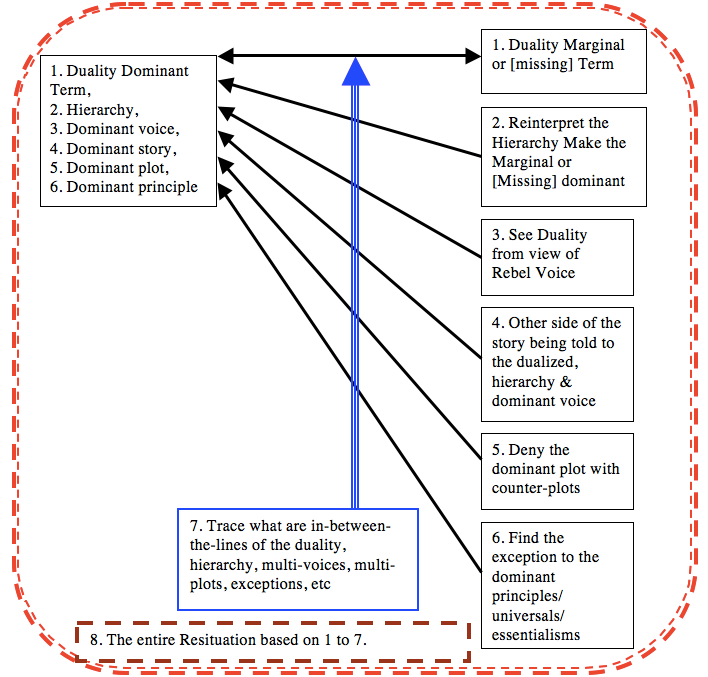

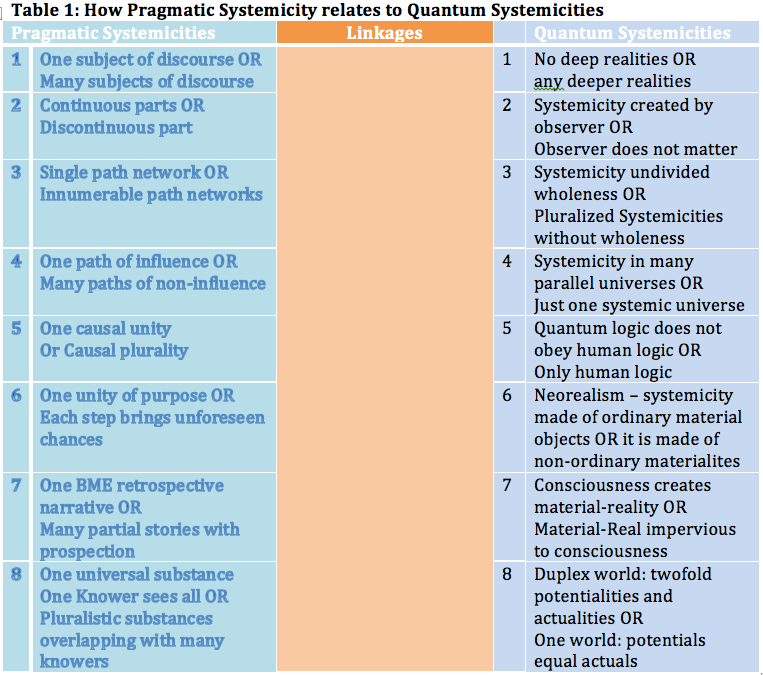
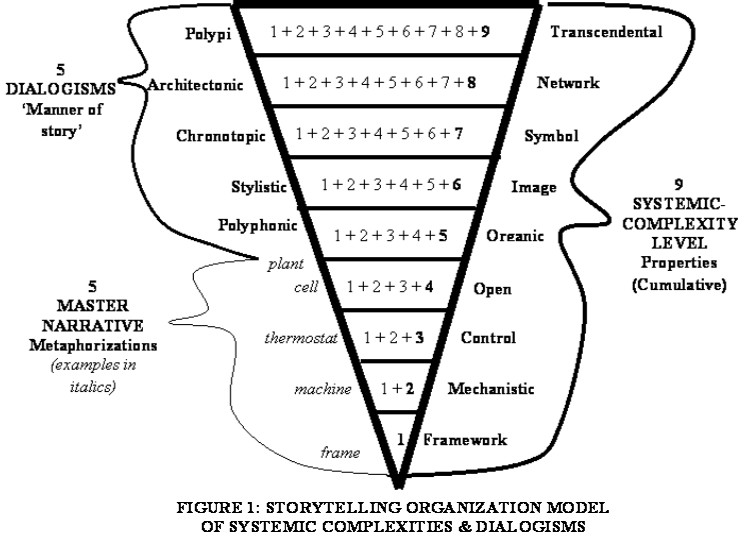
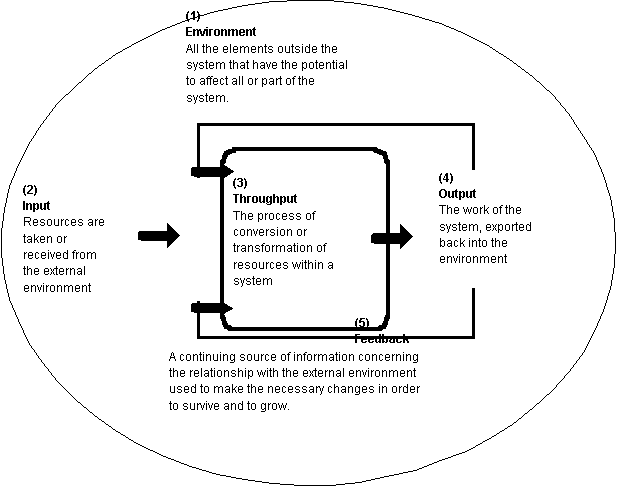

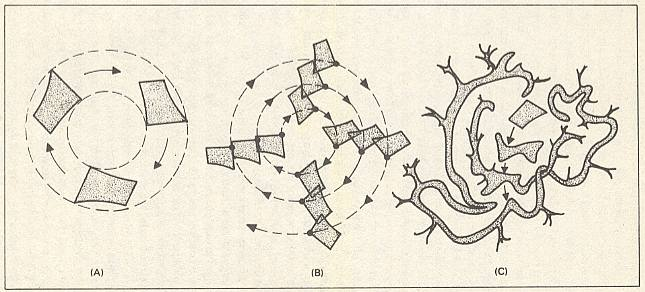
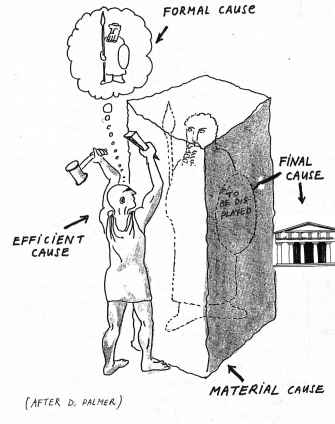
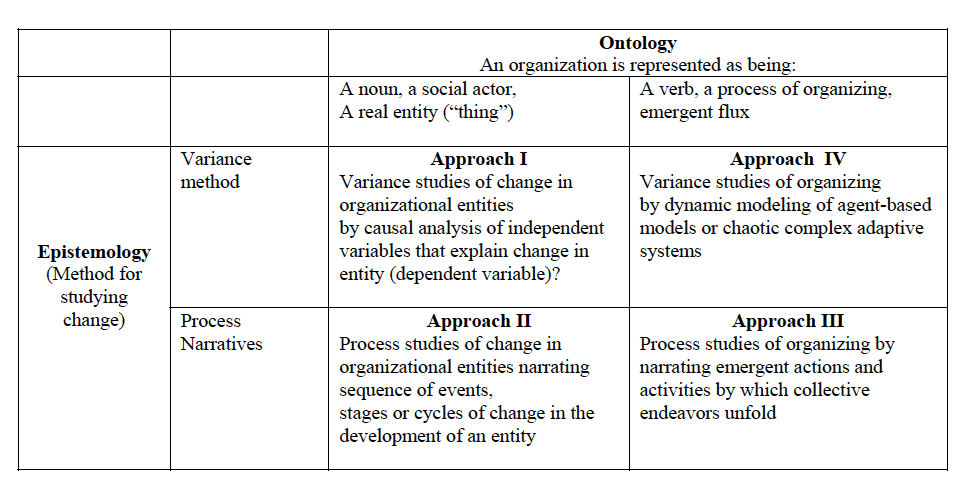

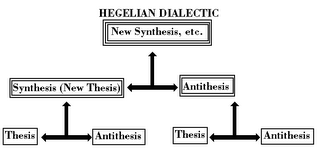

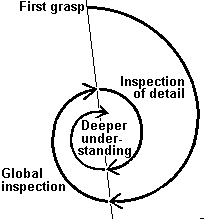

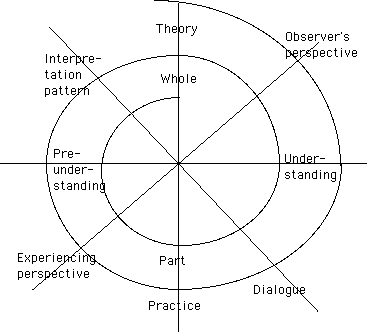
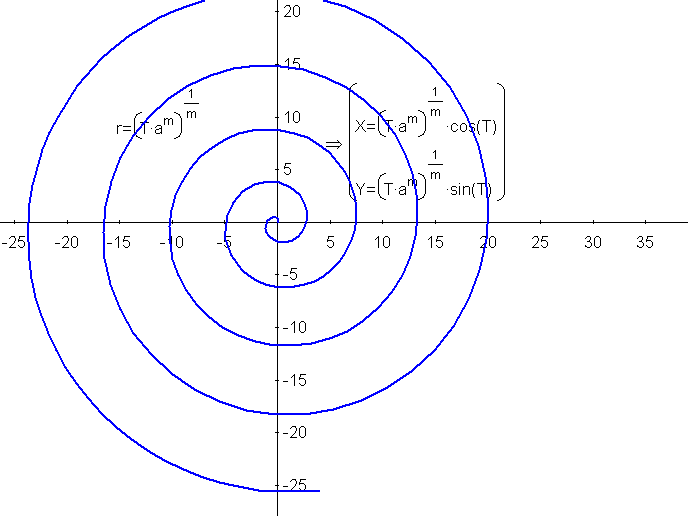
 “If with some raw material, applying some process of transformation, we produce some consumer object, we are in a frame of linear causality: z cause produces y effects” (
“If with some raw material, applying some process of transformation, we produce some consumer object, we are in a frame of linear causality: z cause produces y effects” (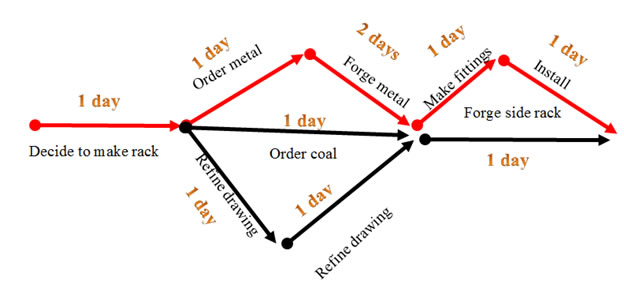
 (feedback loop causality): “An enterprise needs to be regulated. It must carry out its production based on external needs, from the power of its work and its internal energy capacity. But we know – have known for about 40 years now, thanks to cybernetics – that the effect (sales or slumps) can feed back to stimulate or slow the production of objects and services in the enterprise” (
(feedback loop causality): “An enterprise needs to be regulated. It must carry out its production based on external needs, from the power of its work and its internal energy capacity. But we know – have known for about 40 years now, thanks to cybernetics – that the effect (sales or slumps) can feed back to stimulate or slow the production of objects and services in the enterprise” ( (recursive causality): “In the recursive process, the effects and products are necessary to the process that creates them. The product is producer of that which produces it. … Society itself, as an organized and organizing whole, feeds back to produce the individuals through education, language, and school. The individuals, in their interactions, produce society, which produces the individuals that produce it. This creates a spiral circuit through historical evolution” (
(recursive causality): “In the recursive process, the effects and products are necessary to the process that creates them. The product is producer of that which produces it. … Society itself, as an organized and organizing whole, feeds back to produce the individuals through education, language, and school. The individuals, in their interactions, produce society, which produces the individuals that produce it. This creates a spiral circuit through historical evolution” ( (relational/mutual and recursive): cause and effects are in an assemblage network, or ‘rhizome’ of relationships, in a repetition of difference that deterritorializes and reterritorializes the landscape (see Deleuze & Guattari, 1987).
(relational/mutual and recursive): cause and effects are in an assemblage network, or ‘rhizome’ of relationships, in a repetition of difference that deterritorializes and reterritorializes the landscape (see Deleuze & Guattari, 1987). 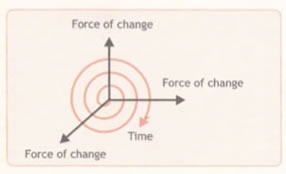

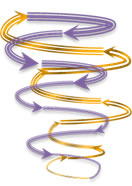 Figure 14 - Basic Q-spiral without situated environment, and below in situatedness.
Figure 14 - Basic Q-spiral without situated environment, and below in situatedness. 